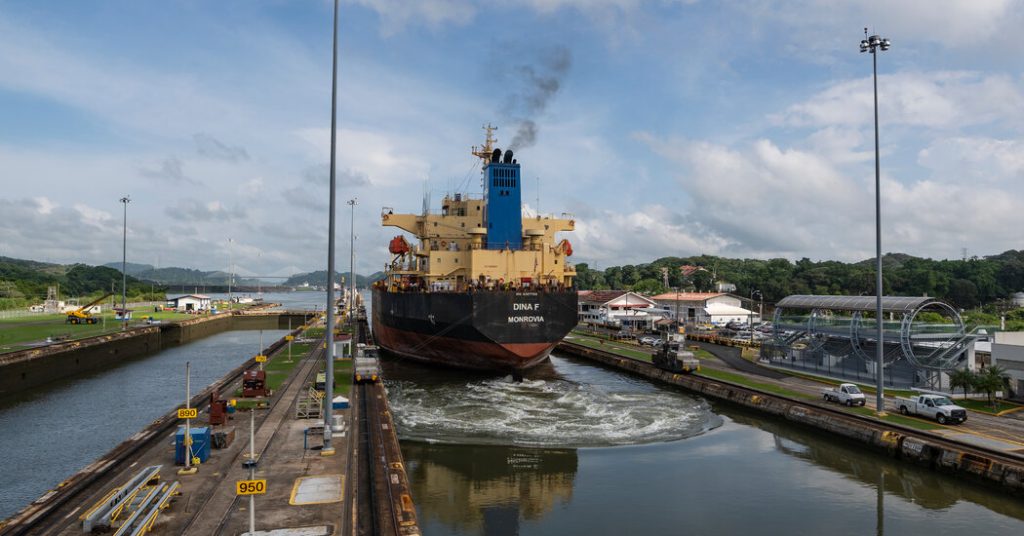An international team of scientists has determined that the recent drought in the Panama Canal was not caused by global warming, but rather by below-normal rainfall associated with the natural climate cycle El Niño. The low reservoir levels resulting from the drought have slowed cargo traffic through the canal for most of the past year, affecting shipping companies worldwide. Despite a recent uptick in canal crossings, the researchers warn that water demand is expected to increase significantly by 2050 due to population growth and expanding seaborne trade, potentially leading to more severe disruptions in the future.
Panama is typically one of the wettest places on Earth, receiving over eight feet of rain annually during the May-to-December wet season. However, last year saw rainfall levels drop to a quarter below normal, making it the nation’s third-driest year on record. This dry spell, along with two previous droughts in 1997-98 and 2015-16, coincided with El Niño conditions, prompting scientists to investigate whether these events were just random occurrences or if they were linked to global warming.
An analysis of weather records in Panama and computer models simulating global climate conditions revealed that the main reason for the low water levels in the canal’s reservoirs was a lack of rainfall, rather than increased evaporation due to high temperatures. While wet-season rainfall in Panama has shown a modest decrease in recent decades, the researchers did not find evidence to support human-induced climate change as the cause. They emphasized that future trends in a warming climate remain uncertain, with unclear drivers behind the slight drying trend observed.
The scientists concluded that El Niño is more definitively connected to below-average rainfall in the Panama Canal region, estimating a 5 percent chance of experiencing similarly low rainfall in future El Niño years. Currently, El Niño conditions are subsiding, and La Niña, the opposite phase of the cycle, is expected to emerge in the upcoming summer. The researchers caution that future El Niño occurrences could exacerbate water scarcity in the region, impacting not only global shipping but also local water supplies for residents.
Affiliated with the World Weather Attribution initiative, the researchers’ findings on the Panama Canal drought have not yet undergone peer review. They stress the importance of understanding and preparing for potential increases in water demand and disruptions in the face of future El Niño events. While global warming may not have been the primary driver behind the recent drought, the researchers urge proactive measures to mitigate the impacts of changing weather patterns on critical infrastructure like the Panama Canal.















